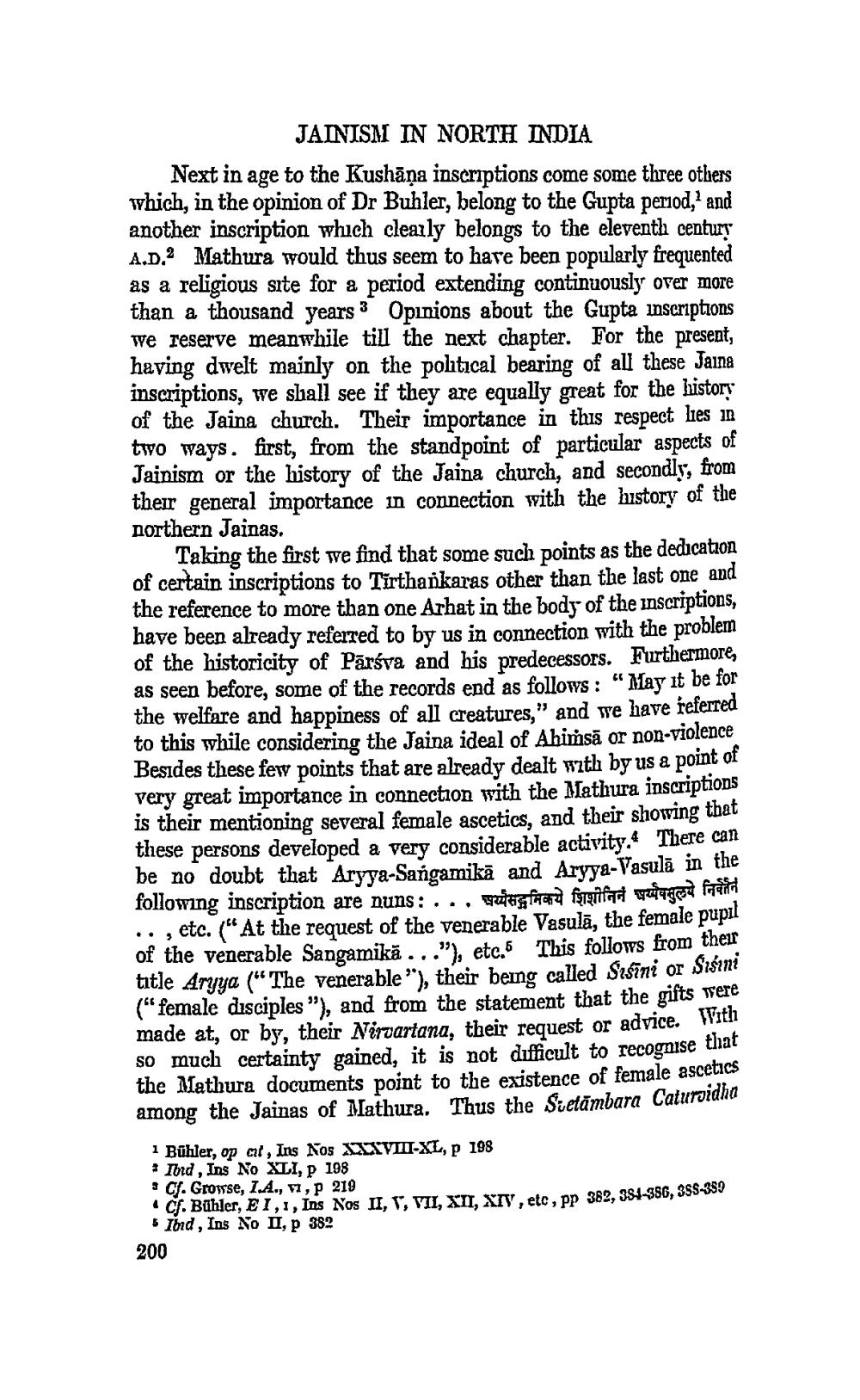________________ JAINISM IN NORTH INDIA Next in age to the Kushana inscriptions come some three others which, in the opinion of Dr Buhler, belong to the Gupta period, and another inscription which clearly belongs to the eleventh century A.D." Mathura would thus seem to have been popularly frequented as a religious site for a period extending continuously over more than a thousand years 3 Opinions about the Gupta inscriptions we reserve meanwhile till the next chapter. For the present, having dwelt mainly on the political bearing of all these Jaina inscriptions, we shall see if they are equally great for the history of the Jaina church. Their importance in this respect lies in two ways. first, from the standpoint of particular aspects of Jainism or the history of the Jaina church, and secondly, from their general importance in connection with the history of the northern Jainas. Taking the first we find that some such points as the dedication of certain inscriptions to Tirthankaras other than the last one and the reference to more than one Arhat in the body of the inscriptions, have been already referred to by us in connection with the problem of the historicity of Parsva and his predecessors. Furthermore, as seen before, some of the records end as follows: "May it be for the welfare and happiness of all creatures," and we have referred to this while considering the Jaina ideal of Ahimsa or non-violence Besides these few points that are already dealt with by us a point of very great importance in connection with the Mathura inscriptions is their mentioning several female ascetics, and their showing that these persons developed a very considerable activity. There can be no doubt that Aryya-Sangamika and Aryy-Vasula in the following inscription are nuns: ... og forfat warga FERIA .., etc. ("At the request of the venerable Vasula, the female pupil of the venerable Sangamika..."), etc. This follows from their title Aryya ("The venerable"), their being called Sisini or Sisin? ("female disciples"), and from the statement that the gifts were made at, or by, their Nirvartana, their request or advice. W so much certainty gained, it is not difficult to recognise that the Mathura documents point to the existence of female ascetics among the Jainas of Mathura. Thus the Sietambara Caluriann 1 Buhler, op at, Ins Nos XXXVIII-XL, p 198 Iord , Ins No XLI, P 199 : G. Growse, 1.A., 77, P 219 . Cf. Buhler, EI,1,Ins Nos II, V, VII, XII. XIV, etc, pp 382, 38-1-986, 355-38 5 Ihrd, Ins No II, p 382 200




